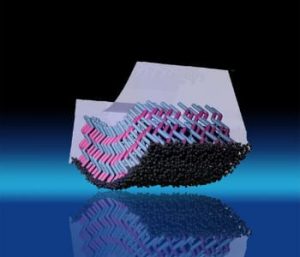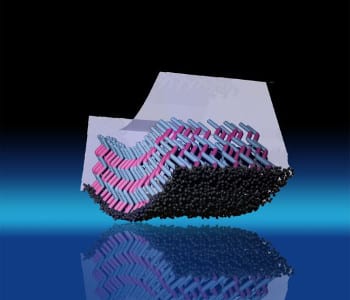 The advent of flexible optoelectronic devices must be accompanied by the development of novel optical and electronic materials that can be integrated into them.
The advent of flexible optoelectronic devices must be accompanied by the development of novel optical and electronic materials that can be integrated into them.
A group of researchers in Spain have shown how to create flexible photonic crystal structures that combine the intense structural colour achievable with inorganic materials with the versatile mechanical properties of polymers. Their bendable and stretchable mirrors result from the infiltration of an elastomer into the voids of a porous columnar nanostructure, which preserves its optical quality after being lifted off the substrate onto which it was originally deposited.
This is only possible due to the effect of an intermediate nanoparticle layer, which allows both the deposition of the nanocolumns and gentle separation from the substrate.
Mirrors like these might be applied in flexible versions of a wide variety of devices such as lasers, in which they could provide both light filtering and optical feedback, light-emitting diodes, in which they could be used to control the spectral characteristics of the luminescence, or solar cells, in which they could reinforce light absorption by acting as back reflectors.
Other areas of research could also benefit from these flexible photonic crystal structures, such as skin protection or food packaging, in which adaptable and versatile films capable of shielding against UV radiation may find application.

















